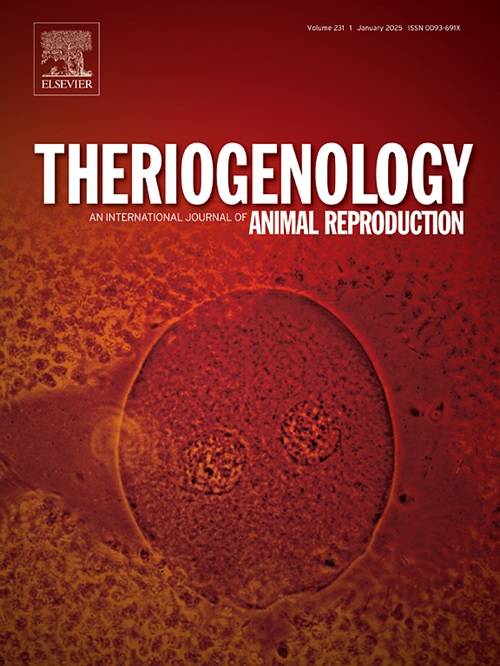Effects of Wharton's jelly mesenchymal stromal/stem cells-derived conditioned medium and platelet-rich plasma on in vitro induced equine endometrial inflammation
IF 2.4
2区 农林科学
Q3 REPRODUCTIVE BIOLOGY
引用次数: 0
Abstract
Over the years, regenerative therapies have emerged as promising alternatives for persistent breeding-induced endometritis. In vitro studies testing the effects of these therapies on equine endometrial cells are still scarce. This study aimed to evaluate in vitro the effect of Wharton's jelly (WJ) mesenchymal stromal/stem cell (MSCs)-derived conditioned medium (WJ-CM) and platelet-rich plasma (PRP) on equine endometrial cells, with or without lipopolysaccharide (LPS)-induced inflammation. The WJ-CM was obtained after 24 h of starvation in Ringer's lactate of WJ-MSCs and PRP was prepared using the double centrifugation. Endometrial epithelial cells obtained from 3 diestrus mare uteri at slaughterhouse were treated for 24 h according to six experimental groups: DMEM standard complete medium (CTRL); 10 ng/mL LPS (LPS); 10 % WJ-CM (CM); 5 % PRP (PRP); 10 ng/mL LPS and 10 % WJ-CM (LPS + CM); 10 ng/mL LPS and 5 % PRP (LPS + PRP). After 6, 12, and 24 h, endometrial cells were evaluated for viability (apoptosis and necrosis), mitochondrial activity and reactive oxygen species (ROS) generation. PGE-2 and IL-10 concentrations in spent medium were measured. The WJ-CM alone did not affect endometrial cell viability and prevented the detrimental effect of LPS on endometrial cells; it suppressed the production of PGE-2. PRP had a deleterious effect on endometrial cell viability, induced the secretion of PGE-2, as well as increased mitochondrial activity and ROS production. Endometrial benefits of the WJ-CM treatment are evident even after an LPS challenge, while unexpectedly PRP showed a deleterious effect.
求助全文
约1分钟内获得全文
求助全文
来源期刊

Theriogenology
农林科学-生殖生物学
CiteScore
5.50
自引率
14.30%
发文量
387
审稿时长
72 days
期刊介绍:
Theriogenology provides an international forum for researchers, clinicians, and industry professionals in animal reproductive biology. This acclaimed journal publishes articles on a wide range of topics in reproductive and developmental biology, of domestic mammal, avian, and aquatic species as well as wild species which are the object of veterinary care in research or conservation programs.
 求助内容:
求助内容: 应助结果提醒方式:
应助结果提醒方式:


